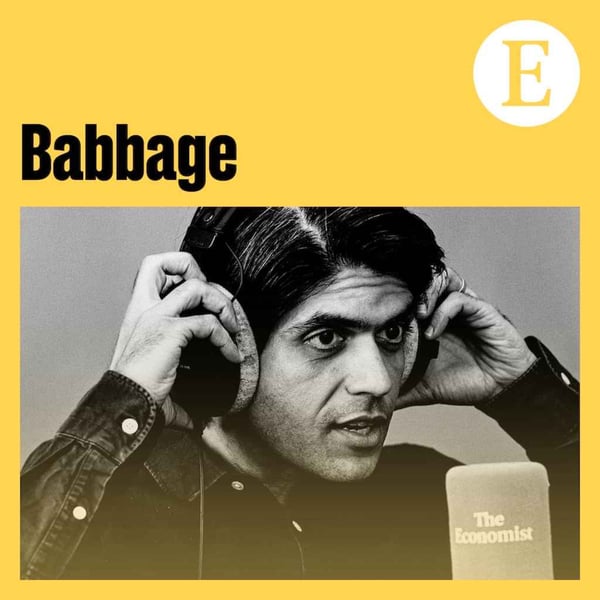Babbage: The science that built the AI revolution—part one
Babbage from The Economist
The Economist
4.8 • 807 Ratings
🗓️ 6 March 2024
⏱️ 46 minutes
🧾️ Download transcript
Summary
What is intelligence? In the middle of the 20th century, the inner workings of the human brain inspired computer scientists to build the first “thinking machines”. But how does human intelligence actually relate to the artificial kind?
This is the first episode in a four-part series on the evolution of modern generative AI. What were the scientific and technological developments that took the very first, clunky artificial neurons and ended up with the astonishingly powerful large language models that power apps such as ChatGPT?
Host: Alok Jha, The Economist’s science and technology editor. Contributors: Ainslie Johnstone, The Economist’s data journalist and science correspondent; Dawood Dassu and Steve Garratt of UK Biobank; Daniel Glaser, a neuroscientist at London’s Institute of Philosophy; Daniela Rus, director of MIT’s Computer Science and Artificial Intelligence Laboratory; Yoshua Bengio of the University of Montréal, who is known as one of the “godfathers” of modern AI.
On Thursday April 4th, we’re hosting a live event where we’ll answer as many of your questions on AI as possible, following this Babbage series. If you’re a subscriber, you can submit your question and find out more at economist.com/aievent.
Get a world of insights for 50% off—subscribe to Economist Podcasts+
If you’re already a subscriber to The Economist, you’ll have full access to all our shows as part of your subscription. For more information about how to access Economist Podcasts+, please visit our FAQs page or watch our video explaining how to link your account.
Transcript
Click on a timestamp to play from that location
| 0:00.0 | Hello, this episode of Babbage is available to listen for free, but if you want to listen every week, |
| 0:06.0 | you'll need to become an economist subscriber. For full details, click the link in the show notes, |
| 0:10.9 | or search online for Economist podcasts. My dreams, my retirement, my life. My map is a range of ready-made funds managed by BlackRock, |
| 0:23.9 | making it easier for you to invest for the future you want, whatever that looks like. |
| 0:28.4 | Our funds use ETFs and index funds to keep costs low and are actively managed, |
| 0:33.3 | meaning the funds stay within their investment risk profiles. |
| 0:36.7 | Plus, it really doesn't take much to begin investing. |
| 0:39.5 | Just get started and let the professionals do the rest. |
| 0:42.9 | My future, my way, my map. |
| 0:46.0 | Ready when you are. |
| 0:47.3 | Index to Futsi Russell. |
| 0:48.7 | Capital at risk. |
| 0:49.6 | The value of investments and the income from them can fall as well as rise and are not guaranteed. |
| 0:54.4 | Investors may not get back the amount originally invested. |
| 0:57.5 | Diversification and asset allocation may not fully protect you from market risk. |
| 1:05.1 | The Economist |
| 1:08.3 | The Economist. we've just arrived |
| 1:15.8 | and an industrial estate outside of Manchester. |
| 1:18.6 | We're looking at a sort of low grey industrial building |
| 1:22.8 | with some huge tanks outside. |
| 1:25.2 | It looks very unassuming from the outside, but there's something pretty |
| 1:29.2 | special going on inside. |
... |
Please login to see the full transcript.
Disclaimer: The podcast and artwork embedded on this page are from The Economist, and are the property of its owner and not affiliated with or endorsed by Tapesearch.
Generated transcripts are the property of The Economist and are distributed freely under the Fair Use doctrine. Transcripts generated by Tapesearch are not guaranteed to be accurate.
Copyright © Tapesearch 2025.

